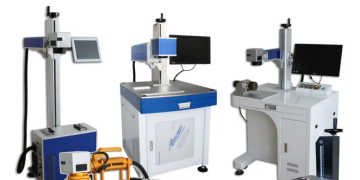The Calibration Knowledge Base answers questions about calibration, an accredited calibration, adjustment, and calibration. You will find information on the topics of test and measurement equipment, calibration cycles, and intervals as well as measuring points.
What is Calibration?
Calibration consists of comparing a measured value with the correct value under specified conditions, documenting the deviation, calculating the measurement uncertainty, and issuing the certificate.
Why calibrate?
Increasing quality requirements and strict regulations lead to more and more demands on production and manufacturing. This means that quality-related measurement tasks must be monitored, documented, and performed with the appropriate test equipment.
These requirements are mentioned not only in many widespread standards, such as the ISO 9000 series but also in industry-specific standards, such as IATF 16949 or the EU GMP guidelines. This is why all measuring instruments used for quality-related tasks must be calibrated. This is imperative because even the smallest measurement errors can have dramatic effects on the safety of production processes or on product quality.
Who is authorized to carry out the calibration of measuring equipment?
Calibration can be carried out by an external laboratory (for example, a calibration service provider) or by an organization internal to the company.
What is the difference between adjustment and calibration?
Adjustment is to set a small deviation from the actual value. During adjustment, it is important to intervene in the measurement system. On the other hand, there is no adjustment to the measuring instrument itself during the simulation. Both methods are used to detect and record deviations. If deviation from the permissible value of tolerance is obtained during the simulation, the measuring instrument is adjusted so that the character is within the allowable tolerance limits.
What is the difference between calibration and periodic verification?
There is a difference between comparisons and periodic reviews of different administrative and organizational differences rather than professional differences. Periodic verification is the “legal certification or legal testing of measuring instruments approved to ensure the accuracy of measurements, performed by the seals”. Calibration, on the other hand, can be done on any measurement offering.
What is a traceable calibration?
In observable comparisons, the measuring object can be traced back to the national or global scale on an unparalleled range of measurements. Each of these calibrations must have an imitation value. The dakks or COFRAC calibration certificates are proof and validation that this calibration can be tracked.
What is an accredited body? Calibration?
Accreditation is the official recognition of the competence of a calibration laboratory to perform certain calibrations in accordance with specified standards (SCS-/dakks guidelines). This formal determination is made by an organization authorized for this purpose. In Germany, this is the German accreditation body in Berlin.
How often should I calibrate my measuring instruments (calibration cycle, calibration interval)?
A frequently chosen calibration interval is 12 months. In fact, the calibration interval must be defined individually for each measuring device depending on the risks and the application.
And why is calibration so important?
Calibration สอบเทียบเครื่องมือวัด ensures that your weighing equipment is fit for purpose, delivering results with minimum deviation from the standard, which can benefit your business in several ways:
– Reliability of results
After calibration, you can be sure that your scales and weighbridges correctly weigh the raw material entering your business and/or the products you sell. Thus, it avoids waste and the need to correct errors, contributing, at the same time, to the satisfaction of its customers.
– Detection of equipment to be replaced
The performance of your weighing equipment may deteriorate because the components are subject to wear. And this decrease in performance cannot always be corrected, but it can be detected in calibrations, indicating that it is time to replace your scales/weighbridges.
– Compliance with your objectives and audits
With calibrations, you ensure that your weighing instruments are operating in accordance with your objectives and standards and you will have a certificate that certifies that they are functioning correctly in the event of audits focusing on the quality of your business.
Now that you know what calibration is and why this process is so important to your business, book yours now with Balanças Marques. Specialists in the manufacture and development of weighing solutions, we also have a calibration laboratory recognized by IPAC – Portuguese Accreditation Institute and we are therefore able to help you in the calibration of your scales and weighbridges.
What is a test device/measuring device/measuring equipment?
Measuring instruments that are used to test for compliance with a quality requirement after the measurement process. By associating measurement with conformity testing to a quality requirement, a measuring device becomes a test device.
At which measuring points and how many measuring points should the calibration be carried out?
Calibration should always cover the full operating range of a sensor. Therefore, two calibration points are usually already defined – the lowest operating point of the sensor and the highest. Since the sensor measurement line cannot always be assumed to be linear between these two points, at least a third calibration point must be added. It is ideally located in the middle of the work area.





























































